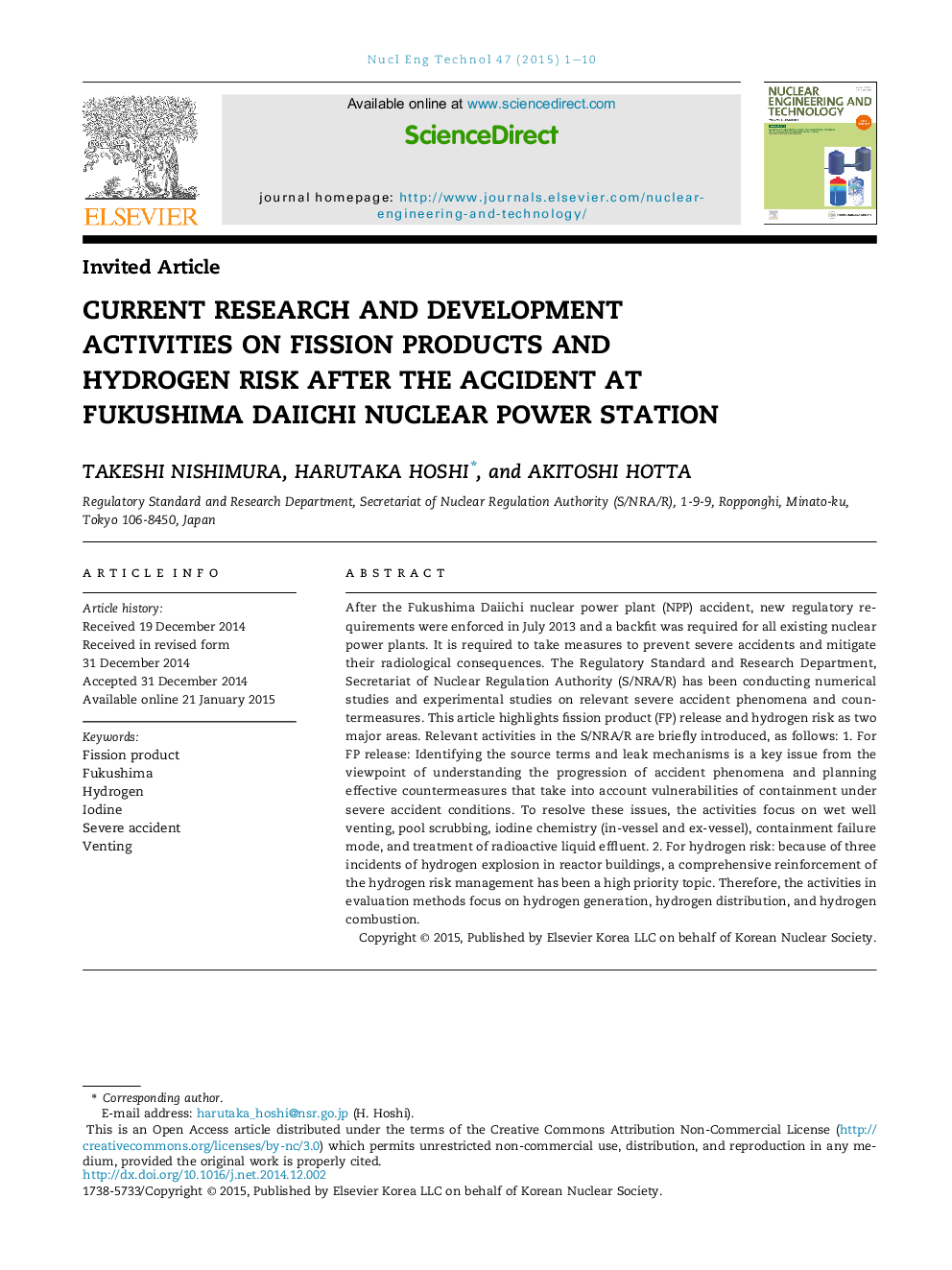| Article ID | Journal | Published Year | Pages | File Type |
|---|---|---|---|---|
| 1740185 | Nuclear Engineering and Technology | 2015 | 10 Pages |
After the Fukushima Daiichi nuclear power plant (NPP) accident, new regulatory requirements were enforced in July 2013 and a backfit was required for all existing nuclear power plants. It is required to take measures to prevent severe accidents and mitigate their radiological consequences. The Regulatory Standard and Research Department, Secretariat of Nuclear Regulation Authority (S/NRA/R) has been conducting numerical studies and experimental studies on relevant severe accident phenomena and countermeasures. This article highlights fission product (FP) release and hydrogen risk as two major areas. Relevant activities in the S/NRA/R are briefly introduced, as follows: 1. For FP release: Identifying the source terms and leak mechanisms is a key issue from the viewpoint of understanding the progression of accident phenomena and planning effective countermeasures that take into account vulnerabilities of containment under severe accident conditions. To resolve these issues, the activities focus on wet well venting, pool scrubbing, iodine chemistry (in-vessel and ex-vessel), containment failure mode, and treatment of radioactive liquid effluent. 2. For hydrogen risk: because of three incidents of hydrogen explosion in reactor buildings, a comprehensive reinforcement of the hydrogen risk management has been a high priority topic. Therefore, the activities in evaluation methods focus on hydrogen generation, hydrogen distribution, and hydrogen combustion.
